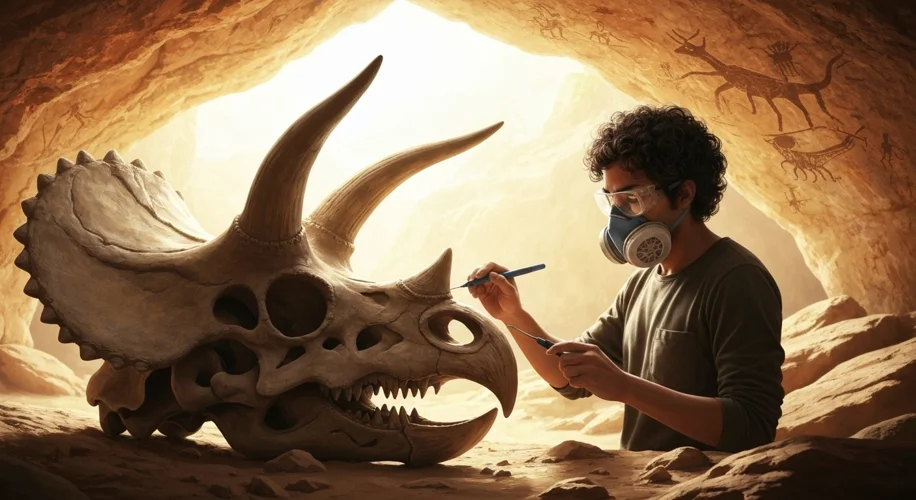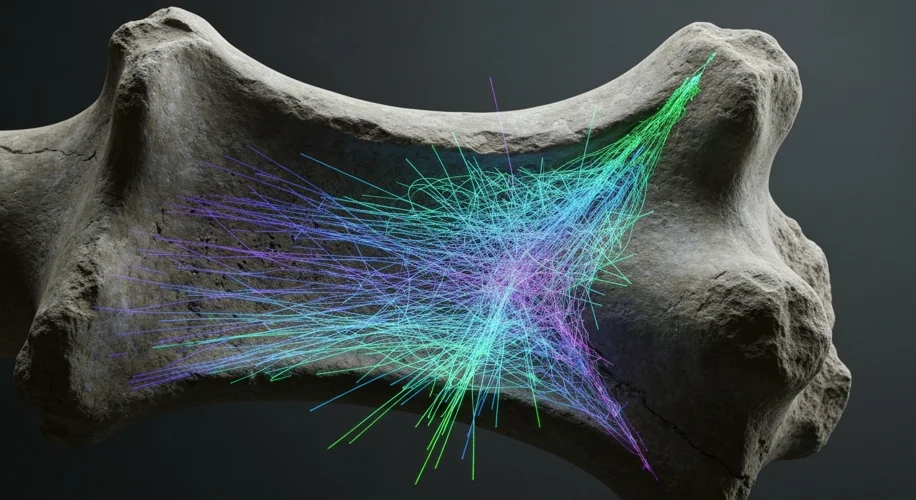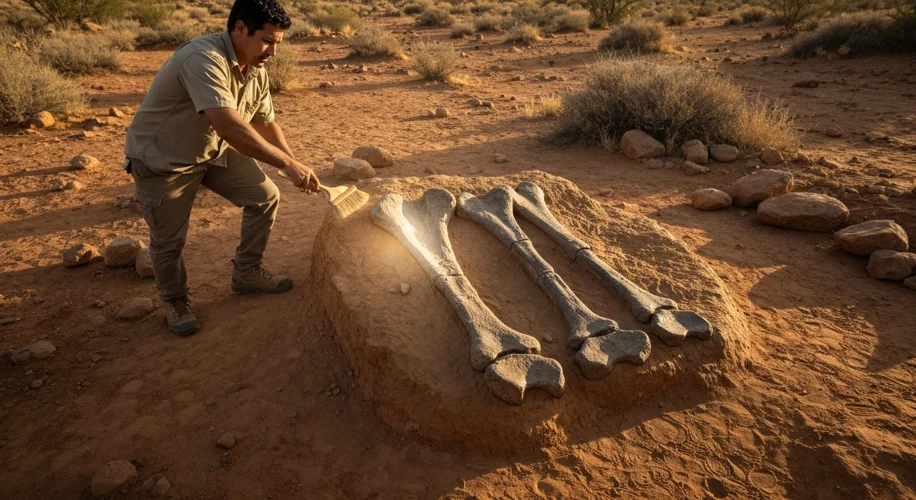For eons, the silent giants of Earth’s past have slumbered, their colossal forms entombed in stone. Paleontologists, like detectives of deep time, have painstakingly unearthed their secrets, piecing together narratives of ancient ecosystems and fearsome creatures. Yet, a persistent whisper of their former vitality, the very essence of their being – their blood – remained frustratingly out of reach, locked away by the unforgiving processes of fossilization.
For decades, the prevailing wisdom held that any organic material, especially delicate proteins like hemoglobin, would have long since degraded, turned to dust by the relentless march of millions of years. This belief cast a long shadow over the quest for understanding dinosaur biology at a molecular level. Imagine the scene: a painstaking excavation, a colossal femur unearthed, its surface weathered by millennia, yet holding within its stony matrix the ghost of a living creature.

This paradigm began to shift with groundbreaking discoveries in the early 2000s. A team led by Mary Schweitzer, a paleontologist at North Carolina State University, made a startling announcement regarding a Tyrannosaurus rex femur. They claimed to have found evidence of soft tissues, including what appeared to be blood vessels and, astonishingly, fragments of hemoglobin – the protein responsible for carrying oxygen in blood.
This revelation was met with a mixture of awe and skepticism. Hemoglobin, a complex protein, seemed far too fragile to survive for 68 million years. The scientific community grappled with how such a delicate molecule could persist. The sheer scale of time involved presented an almost insurmountable barrier. Critics questioned the validity of the findings, suggesting contamination or misinterpretation of mineral structures.
However, the scientific process is one of relentless inquiry and refinement. The initial findings spurred further research, pushing the boundaries of imaging technology and analytical techniques. The challenge was to develop methods that could definitively identify and preserve these elusive biomolecules without destroying them, and to do so in a way that was both precise and irrefutable.
Enter the realm of hyperspectral imaging and advanced mass spectrometry. These sophisticated tools act like super-powered magnifying glasses and chemical sniffers, capable of detecting minute traces of organic compounds within the fossilized matrix. Hyperspectral imaging, for instance, works by capturing light reflected off an object at hundreds of different wavelengths. Different molecules absorb and reflect light in unique spectral signatures, allowing scientists to identify their presence, even in minuscule quantities.

In a study published in Proceedings of the National Academy of Sciences on September 12, 2025, a team of researchers utilized a novel combination of these advanced techniques to re-examine fossilized bone fragments. Their focus was on identifying and characterizing preserved hemoglobin. The results were compelling. By employing a non-destructive hyperspectral imaging approach, they were able to map the distribution of specific spectral signatures consistent with hemoglobin.
This was followed by targeted micro-sampling and analysis using high-resolution mass spectrometry. This technique identifies molecules by measuring their mass-to-charge ratio, providing an incredibly precise chemical fingerprint. The analysis confirmed the presence of peptide fragments—the building blocks of proteins—that are uniquely indicative of hemoglobin.
The implications of this confirmation are profound. It suggests that under specific, perhaps rare, geological conditions, elements of dinosaurian physiology may indeed be preserved over vast timescales. This opens up tantalizing new avenues for research into dinosaurian physiology, diet, and even their evolutionary relationships. It hints at a richer, more complex picture of these ancient beasts, moving beyond mere skeletal reconstructions to a deeper understanding of their once-living tissues.
While the exact conditions that allow for such extraordinary preservation are still being investigated—likely involving rapid burial, specific mineral environments, and a lack of oxygen—this discovery marks a significant leap forward. It’s a testament to human ingenuity and the unyielding curiosity that drives scientific exploration. The whispers from the bones are growing louder, revealing not just the shapes of dinosaurs, but the very molecules that once sustained their magnificent lives.

